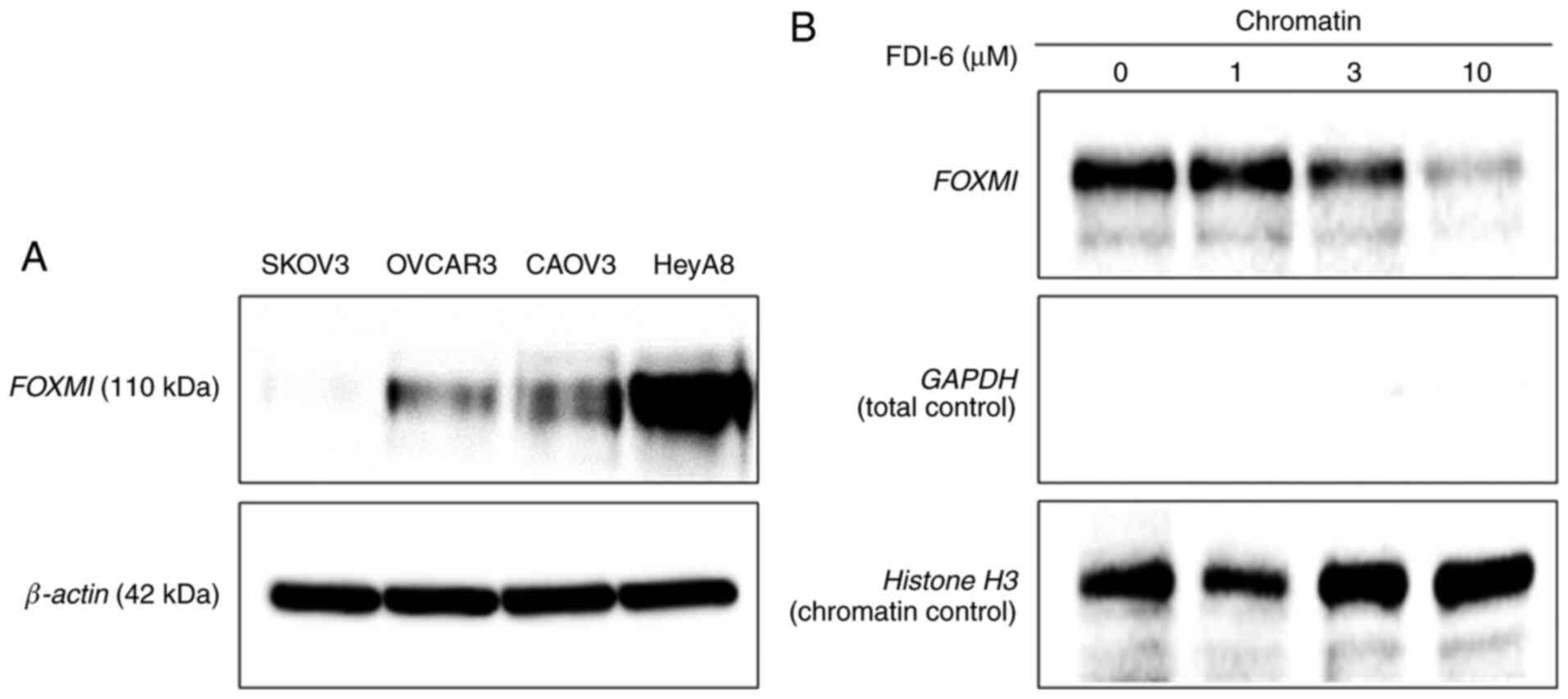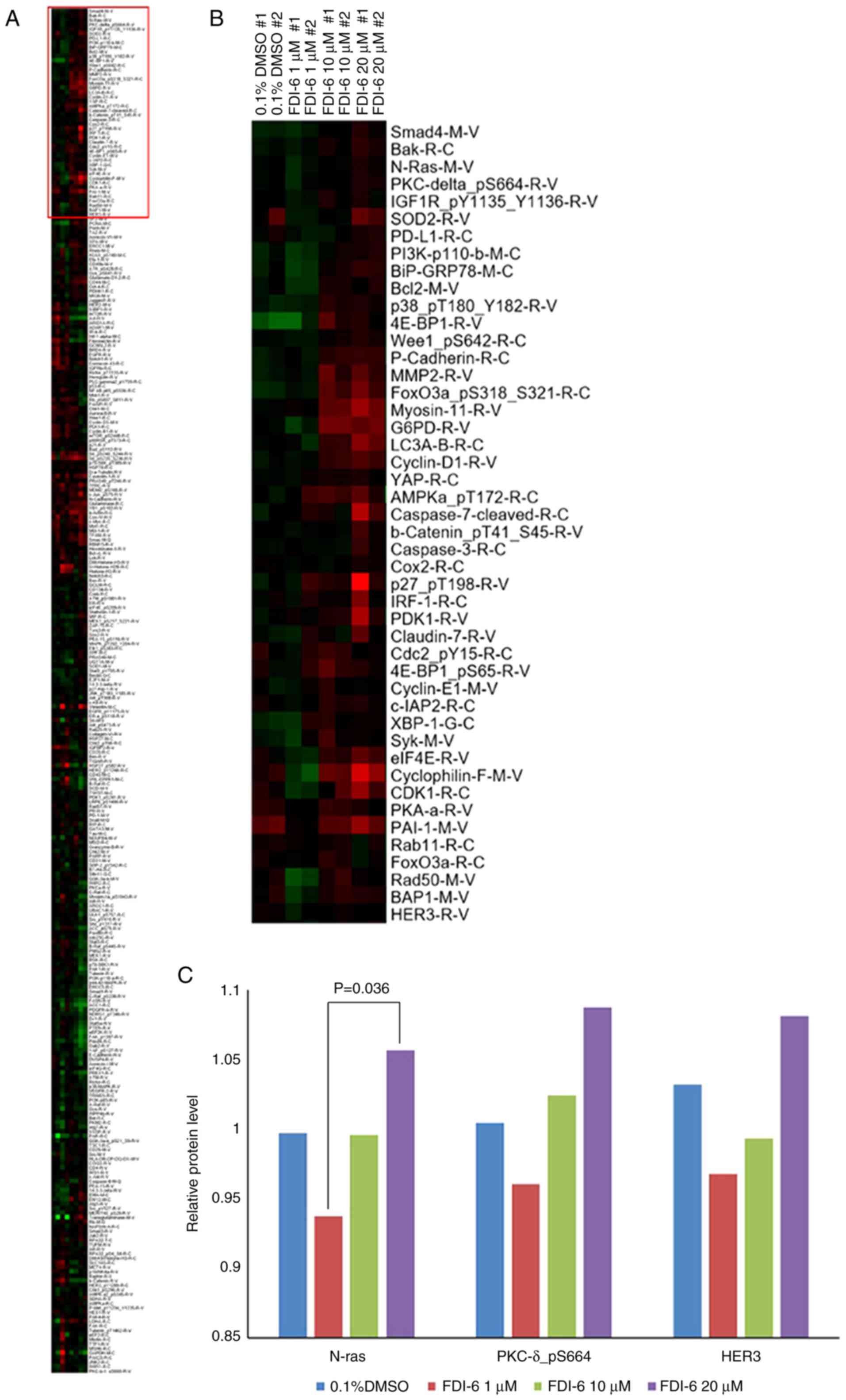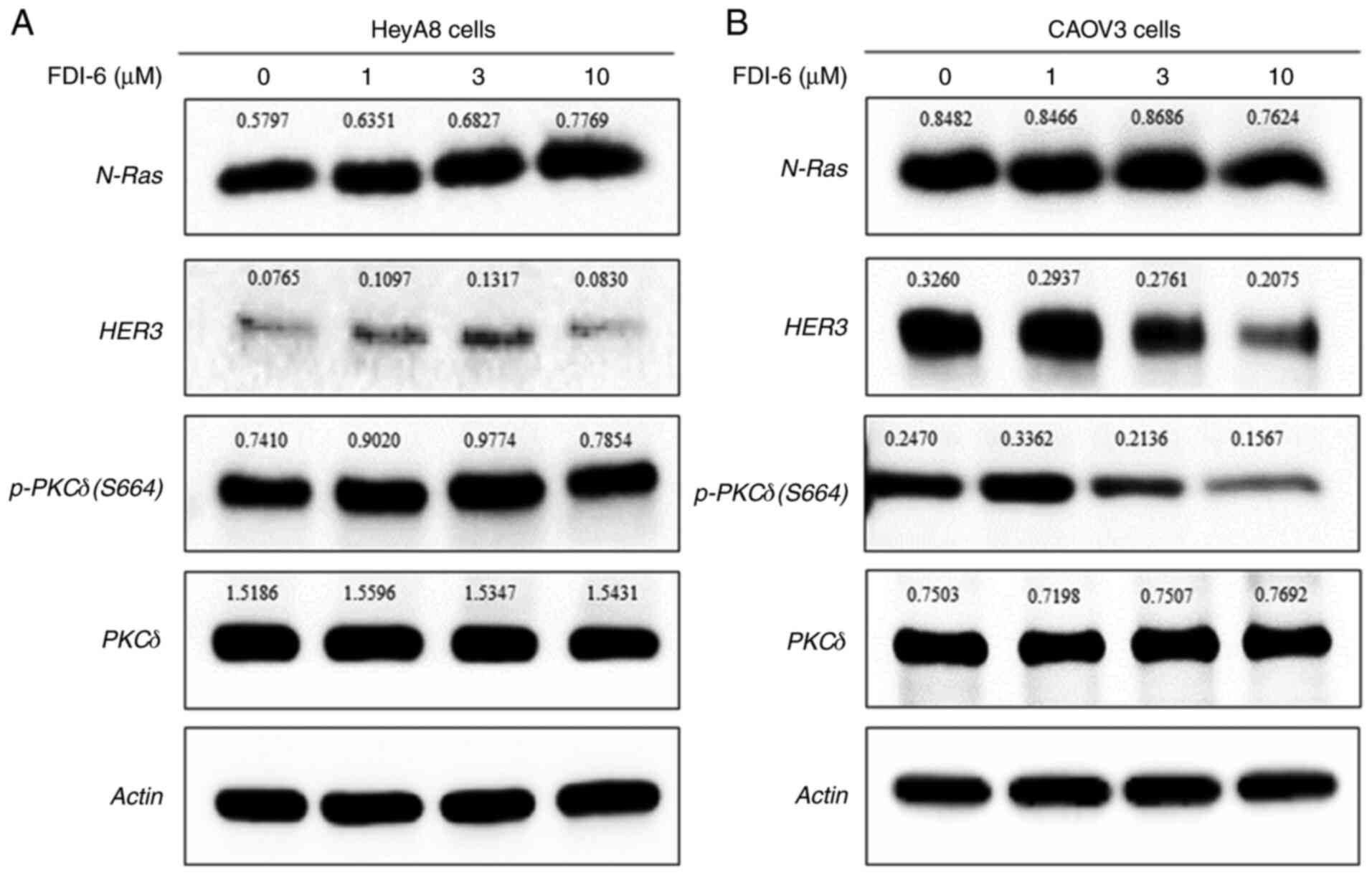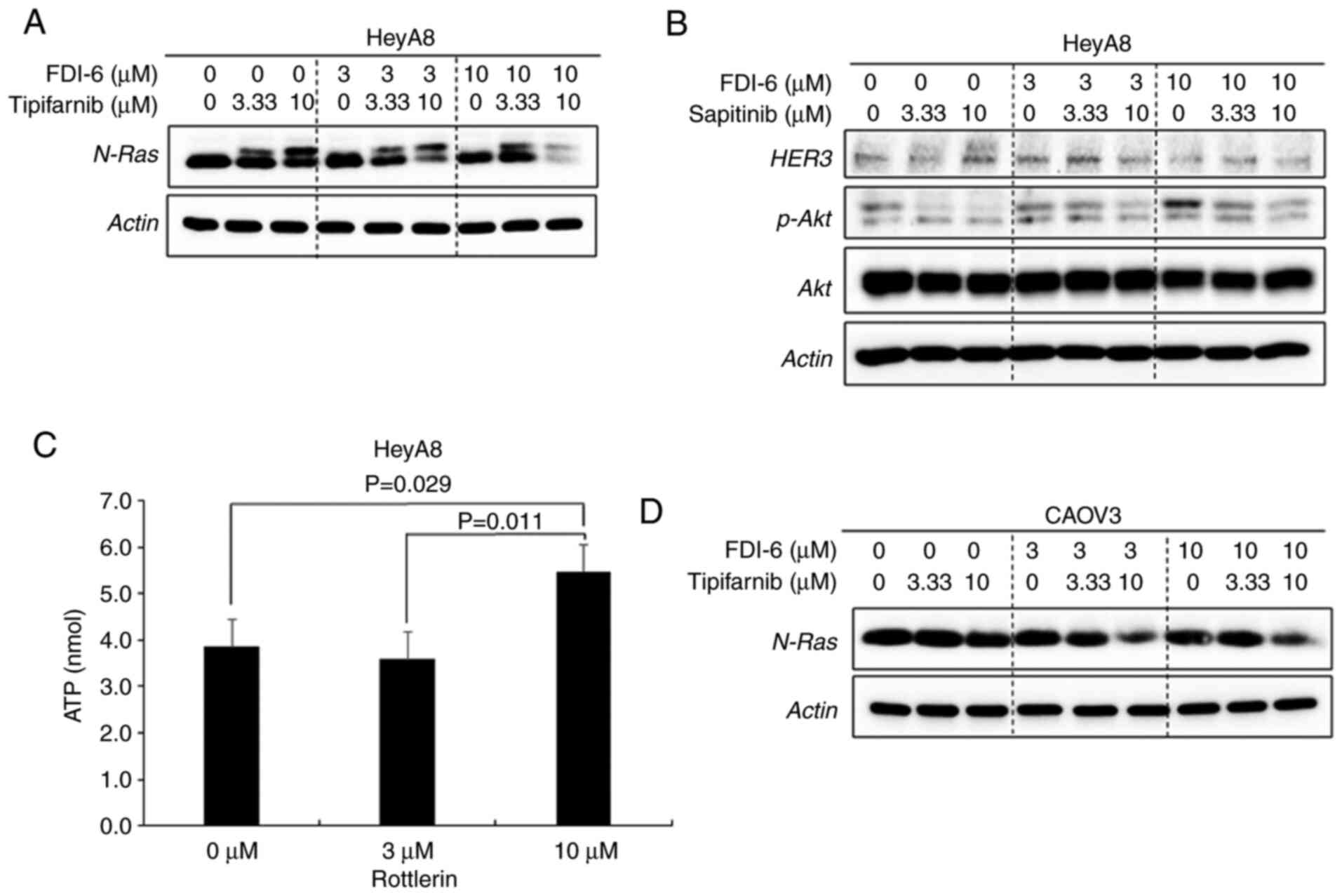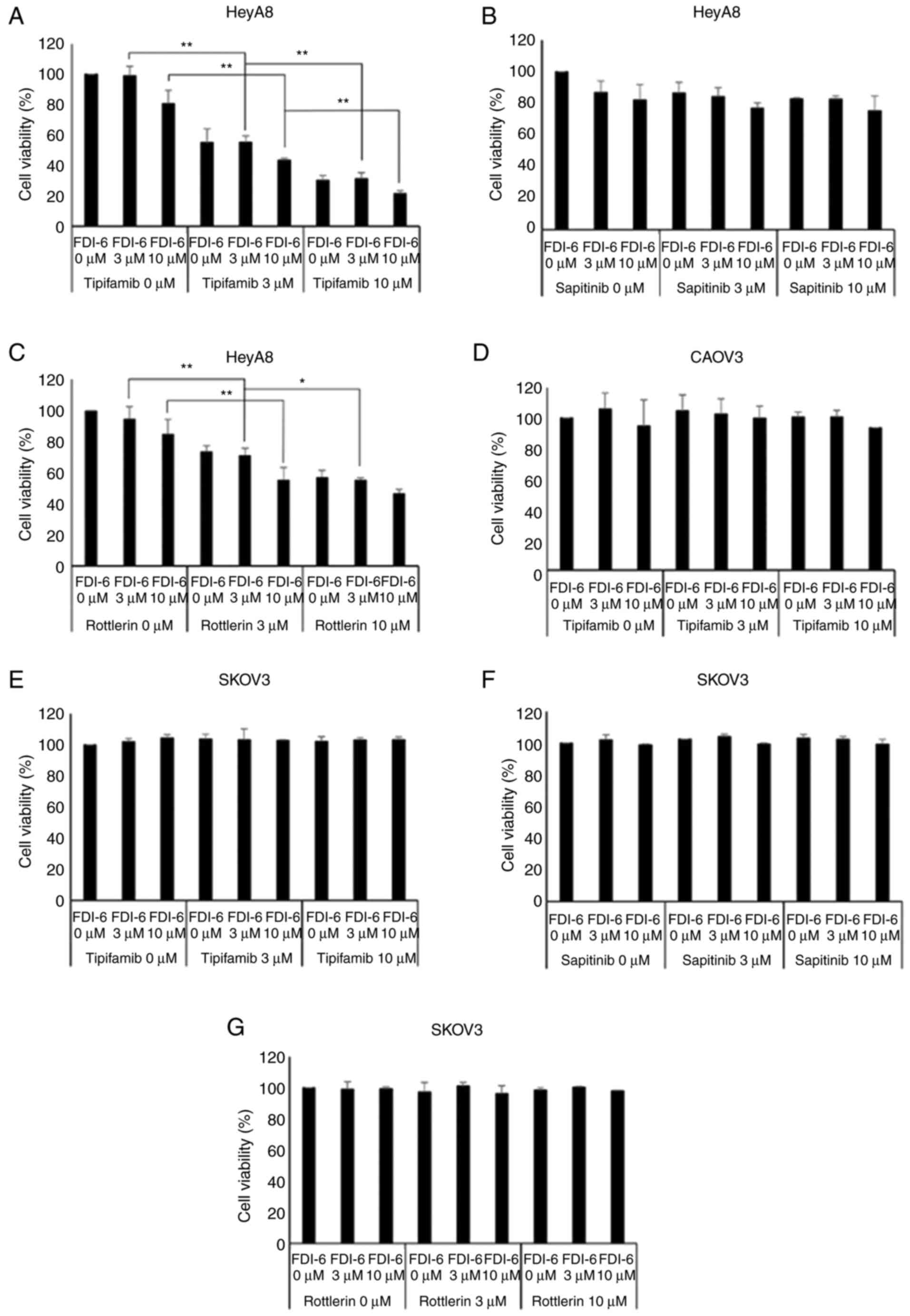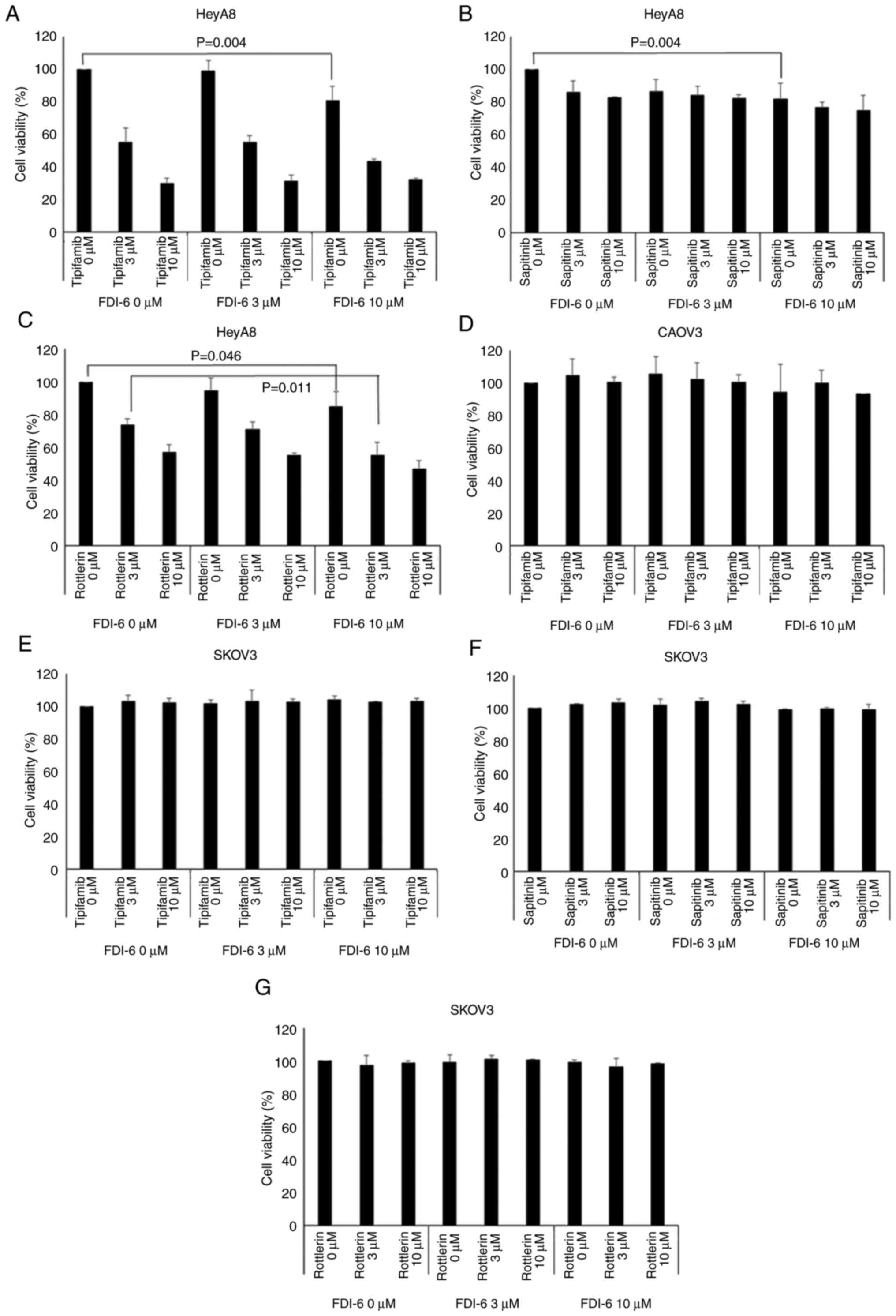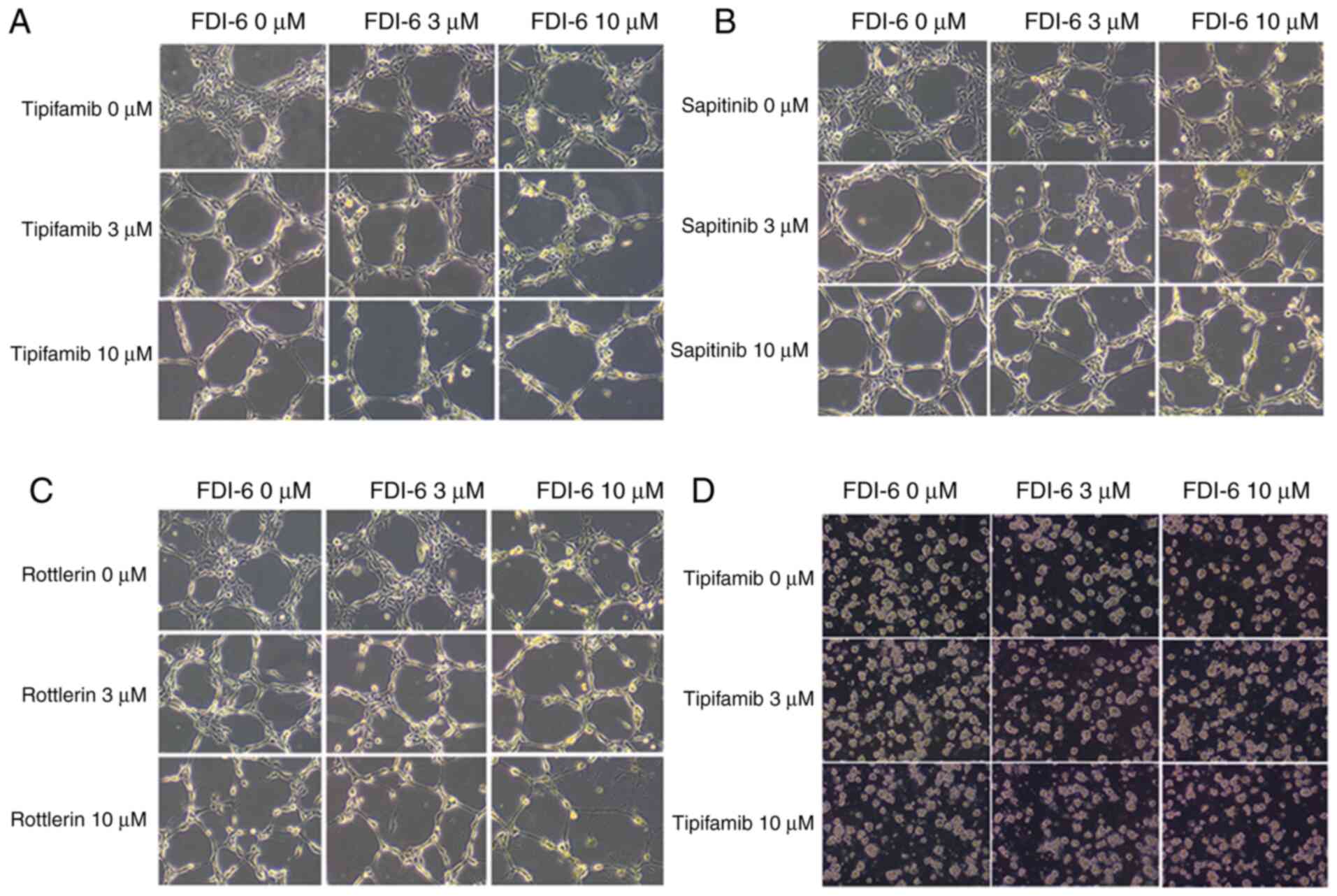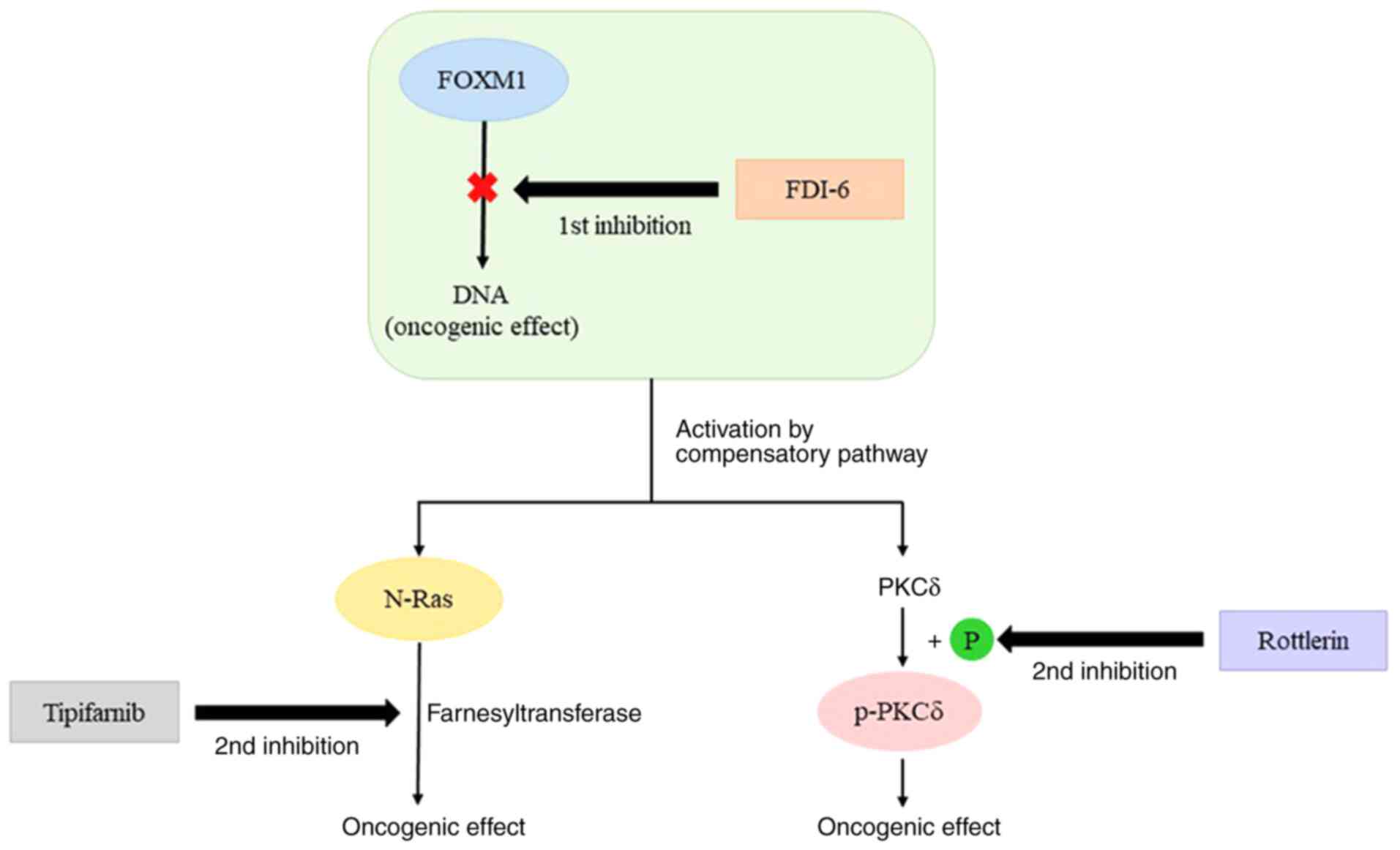|
1
|
Lheureux S, Gourley C, Vergote I and Oza
AM: Epithelial ovarian cancer. Lancet. 393:1240–1253. 2019.
View Article : Google Scholar
|
|
2
|
Ferlay J, Soerjomataram I, Dikshit R, Eser
S, Mathers C, Rebelo M, Parkin DM, Forman D and Bray F: Cancer
incidence and mortality worldwide: Sources, methods and major
patterns in GLOBOCAN 2012. Int J Cancer. 136:E359–E386. 2015.
View Article : Google Scholar
|
|
3
|
Berek JS: Ovarian, fallopian tube and
peritoneal cancer. Berek and Novak's Gynecology. 15th edition.
Berek JS, Longacre TA and Friedlander M: Wolters Kluwer/Lippincott
Williams & Wilkins; Philadelphia, PA: pp. 1350–1427. 2011
|
|
4
|
Cancer Genome Atlas Research Network.
Integrated genomic analyses of ovarian carcinoma. Nature.
474:609–615. 2011. View Article : Google Scholar
|
|
5
|
Choi JI, Park SH, Lee HJ, Lee DW and Lee
HN: Inhibition of phospho-S6 kinase, a protein involved in the
compensatory adaptive response, increases the efficacy of
paclitaxel in reducing the viability of matrix-attached ovarian
cancer cells. PLoS One. 11:e01550522016. View Article : Google Scholar
|
|
6
|
Gormally MV, Dexheimer TS, Marsico G,
Sanders DA, Lowe C, Matak-Vinković D, Michael S, Jadhav A, Rai G,
Maloney DJ, et al: Suppression of the FOXM1 transcriptional
programme via novel small molecule inhibition. Nat Commun.
5:51652014. View Article : Google Scholar
|
|
7
|
Koo CY, Muir KW and Lam EWF: FOXM1: From
cancer initiation to progression and treatment. Biochim Biophys
Acta. 1819:28–37. 2012. View Article : Google Scholar
|
|
8
|
Chan DW, Hui WW, Cai PC, Liu MX, Yung MM,
Mak CS, Leung TH, Chan KK and Ngan HY: Targeting GRB7/ERK/FOXM1
signaling pathway impairs aggressiveness of ovarian cancer cells.
PLoS One. 7:e525782012. View Article : Google Scholar
|
|
9
|
Turke AB, Zejnullahu K, Wu YL, Song Y,
Dias-Santagata D, Lifshits E, Toschi L, Rogers A, Mok T, Sequist L,
et al: Preexistence and clonal selection of MET amplification in
EGFR mutant NSCLC. Cancer Cell. 17:77–88. 2010. View Article : Google Scholar
|
|
10
|
Debnath J and Brugge JS: Modelling
glandular epithelial cancers in three-dimensional cultures. Nat Rev
Cancer. 5:675–688. 2005. View
Article : Google Scholar
|
|
11
|
Weigelt B and Bissell MJ: Unraveling the
microenvironmental influences on the normal mammary gland and
breast cancer. Semin Cancer Biol. 18:311–321. 2008. View Article : Google Scholar
|
|
12
|
Yamada KM and Cukierman E: Modeling tissue
morphogenesis and cancer in 3D. Cell. 130:601–610. 2007. View Article : Google Scholar
|
|
13
|
Buick RN, Pullano R and Trent JM:
Comparative properties of five human ovarian adenocarcinoma cell
lines. Cancer Res. 45:3668–3676. 1985.
|
|
14
|
Appels NM, Beijnen JH and Schellens JH:
Development of farnesyl transferase inhibitors: A review.
Oncologist. 10:565–578. 2005. View Article : Google Scholar
|
|
15
|
Gschwendt M, Müller HJ, Kielbassa K, Zang
R, Kittstein W, Rincke G and Marks F: Rottlerin, a novel protein
kinase inhibitor. Biochem Biophys Res Commun. 199:93–98. 1994.
View Article : Google Scholar
|
|
16
|
Scheipl S, Barnard M, Cottone L, Jorgensen
M, Drewry DH, Zuercher WJ, Turlais F, Ye H, Leite AP, Smith JA, et
al: EGFR inhibitors identified as a potential treatment for
chordoma in a focused compound screen. J Pathol. 239:320–334. 2016.
View Article : Google Scholar
|
|
17
|
Mishra R, Patel H, Alanazi S, Yuan L and
Garrett JT: HER3 signaling and targeted therapy in cancer. Oncol
Rev. 12:3552018.
|
|
18
|
Tabatabaei-Dakhili SA, Aguayo-Ortiz R,
Domínguez L and Velázquez-Martínez CA: Untying the knot of
transcription factor druggability: Molecular modeling study of
FOXM1 inhibitors. J Mol Graph Model. 80:197–210. 2018. View Article : Google Scholar
|
|
19
|
Kalinichenko VV and Kalin TV: Is there
potential to target FOXM1 for ‘undruggable’ lung cancers? Expert
Opin Ther Targets. 19:865–867. 2015. View Article : Google Scholar
|
|
20
|
Trusolino L and Bertotti A: Compensatory
pathways in oncogenic kinase signaling and resistance to targeted
therapies: Six degrees of separation. Cancer Discov. 2:876–880.
2012. View Article : Google Scholar
|
|
21
|
Uprety D and Adjei AA: KRAS: From
undruggable to a druggable cancer target. Cancer Treat Rev.
89:1020702020. View Article : Google Scholar
|
|
22
|
Elmariah H and DeZern AE: Chronic
myelomonocytic leukemia: 2018 update to prognosis and treatment.
Curr Hematol Malig Rep. 14:154–163. 2019. View Article : Google Scholar
|
|
23
|
Erba HP, Othus M, Walter RB, Kirschbaum
MH, Tallman MS, Larson RA, Slovak ML, Kopecky KJ, Gundacker HM and
Appelbaum FR: Four different regimens of farnesyltransferase
inhibitor tipifarnib in older, untreated acute myeloid leukemia
patients: North American Intergroup Phase II study SWOG S0432. Leuk
Res. 38:329–333. 2014. View Article : Google Scholar
|
|
24
|
Yam C, Murthy RK, Valero V, Szklaruk J,
Shroff GS, Stalzer CJ, Buzdar AU, Murray JL, Yang W, Hortobagyi GN,
et al: A phase II study of tipifarnib and gemcitabine in metastatic
breast cancer. Invest New Drugs. 36:299–306. 2018. View Article : Google Scholar
|
|
25
|
Vasan N, Boyer JL and Herbst RS: A RAS
renaissance: Emerging targeted therapies for KRAS-mutated non-small
cell lung cancer. Clin Cancer Res. 20:3921–30. 2014. View Article : Google Scholar
|
|
26
|
Giorgi C, Agnoletto C, Baldini C, Bononi
A, Bonora M, Marchi S, Missiroli S, Patergnani S, Poletti F,
Rimessi A, et al: Redox control of protein kinase C: Cell- and
disease-specific aspects. Antioxid Redox Signal. 13:1051–1085.
2010. View Article : Google Scholar
|
|
27
|
Soltoff SP: Rottlerin: An inappropriate
and ineffective inhibitor of PKCdelta. Trends Pharmacol Sci.
28:453–458. 2007. View Article : Google Scholar
|
|
28
|
Hynes NE and MacDonald G: ErbB receptors
and signaling pathways in cancer. Curr Opin Cell Biol. 21:177–184.
2009. View Article : Google Scholar
|
|
29
|
Newby JC, Johnston SR, Smith IE and
Dowsett M: Expression of epidermal growth factor receptor and
c-erbB2 during the development of tamoxifen resistance in human
breast cancer. Clin Cancer Res. 3:1643–1651. 1997.
|
|
30
|
Shou J, Massarweh S, Osborne CK, Wakeling
AE, Ali S, Weiss H and Schiff R: Mechanisms of tamoxifen
resistance: Increased estrogen receptor-HER2/neu cross-talk in
ER/HER2-positive breast cancer. J Natl Cancer Inst. 96:926–935.
2004. View Article : Google Scholar
|















